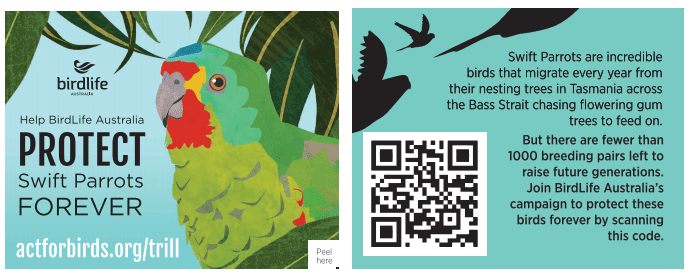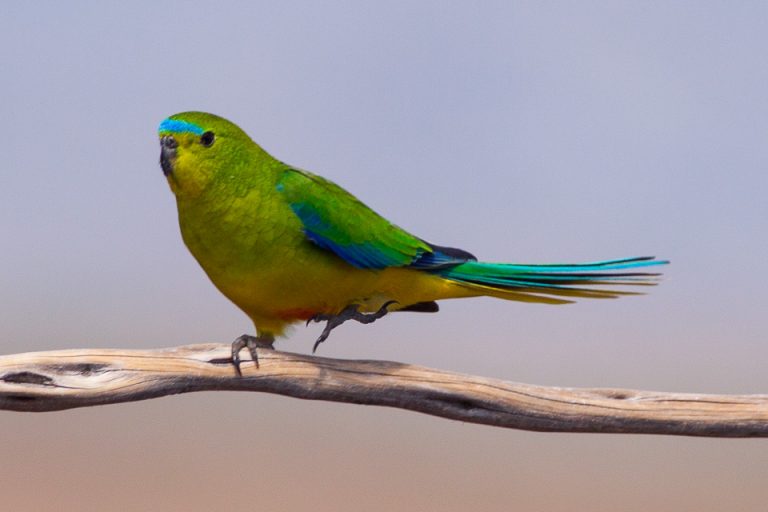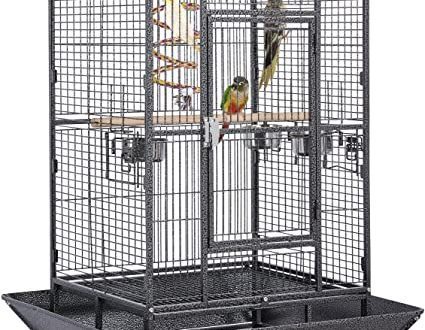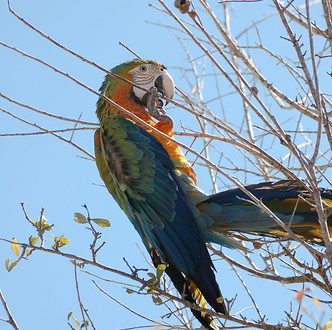
Australia fights to save endangered parrot species
The golden-bellied parrot (Neophema chrysogaster) is critically endangered. The number of individuals in the wild has reached forty! In captivity, there are about 300 of them, some of them are in special bird breeding centers, which have been operating since 1986 under the Orange-Bellied Parrot Recovery Team program.
The reasons for the strong decline in the population of this species lie not only in the destruction of their habitat, but also in the increase in various kinds of birds and predatory animals, through their importation by humans to the continent. The “new inhabitants” of Australia turned out to be too tough competitors for golden-bellied parrots.

Ornithologists know that the breeding season for these birds is in the summer in the southwestern part of Tasmania. For the sake of this, birds migrate annually from the southeastern states: New South Wales and Victoria.
An experiment by scientists at the Australian National University consisted of placing chicks that hatched in the light in the center of parrots into the nests of wild female golden-bellied parrots during the bird breeding season.
The emphasis was on the age of the chicks: from 1 to 5 days after hatching. Doctor Dejan Stojanovic (Dejan Stojanovic) placed five chicks in the nest of a wild female, within a few days four of them died, but the fifth survived and began to gain weight. According to scientists, the female takes good care of the “foundling”. Stojanovic is optimistic and considers this result to be very good.
The team had to take such a step after several unsuccessful attempts to dive captive-bred parrots into their natural habitat. The survival rate was very low, the birds were very susceptible to various diseases.
Also, researchers are trying to replace unfertilized eggs in the nest of wild golden-bellied parrots with fertilized ones from the breeding center.
Unfortunately, since the beginning of January, a bacterial infection at the center in Hobart has wiped out 136 birds. Because of what happened, in the future, measures will be taken to distribute the birds to four different centers, which will insure against such a disaster in the future.
An outbreak of a bacterial infection at the breeding center forced the suspension of the experiment while the quarantine and the end of the treatment of all birds living there at the moment.
Despite the tragedy, the team of scientists believe that the experiment was successful despite the fact that only one of the three selected nests was used. Ornithologists expect to meet the adopted child next season, a positive outcome will allow a more ambitious approach to the experiment.
Source: Science News





